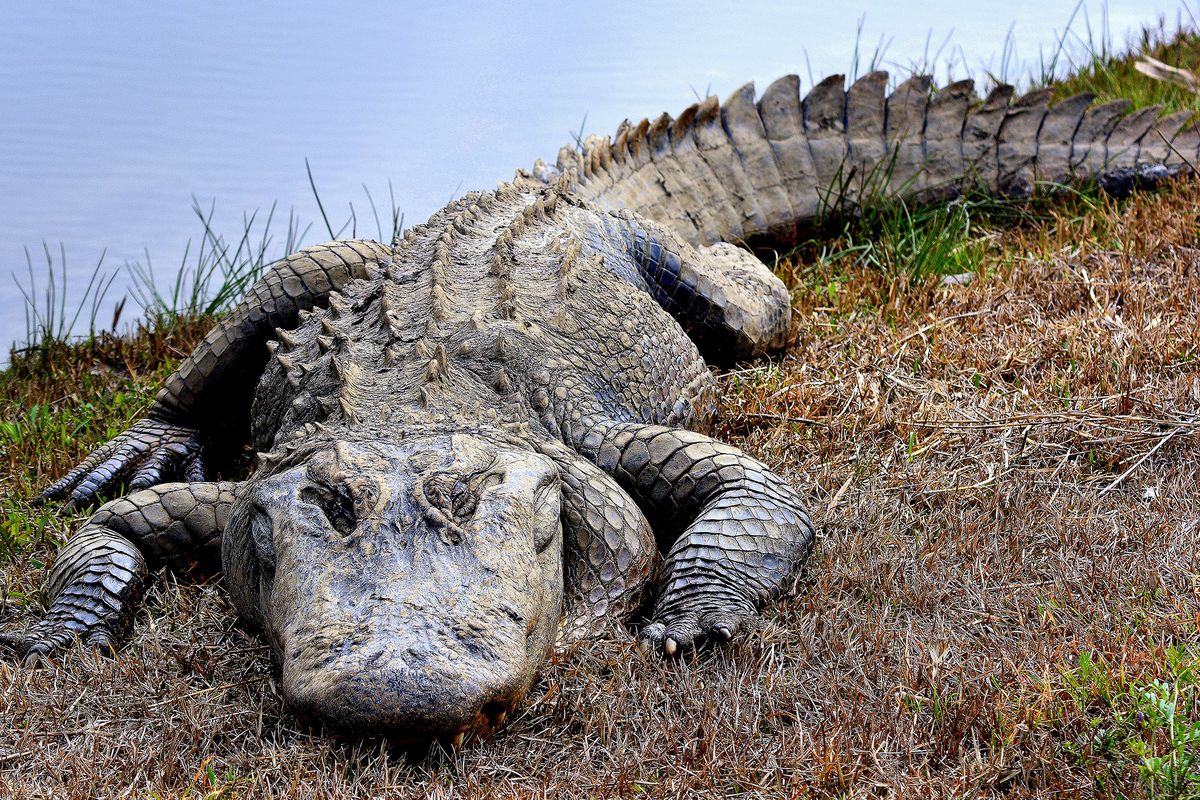Alligators need warm weather to make an area their home

Since 2015, alligators have occasionally been seen in Maryland and Virginia communities around the Chesapeake Bay. Does that mean the prehistoric-looking reptiles are moving into the Mid-Atlantic region?
Adult alligators can spend time in brackish waters where food resources such as blue crabs are plentiful, said alligator biologist Alicia Davis of North Carolina’s Wildlife Resources Commission. “However, the Chesapeake Bay is too far north to support alligator populations. North Carolina is the northernmost extent of alligator range.”
Chris Rowe of the University of Maryland’s environmental services thinks humans are to blame for the sightings. “My instinct is they were released illegal pets,” Rowe said. Alligators have survived millions of years but need temps above 40 degrees to be active and can’t digest food if the temperature is below 70.
Reptiles are coldblooded (ectothermic) and rely on external sources of heat to regulate their body temperature. The armor-looking scutes along a gator’s back act like solar panels. As alligators bask in the sun, blood flowing through the scutes warms the gator’s body. To cool down, gators hold their mouths open like a dog panting.
Alligators don’t hibernate. In cold weather, they go into short periods of dormancy called “brumation.” Their heart rate slows down, and they become very sluggish, burrowing into waterside dens or tunnels, venturing out periodically to bask in the sun. Gators can’t breathe underwater. They surface periodically or keep their nostrils above ice to breathe.
While they quit eating, they continue to drink water to avoid dehydration. With large bodies and short legs, gators cannot migrate over land. Nor do they have glands to filter toxic levels of salt as crocodiles do. That means gators can’t travel north by way of the ocean.
They live in swamps, lakes and slow-moving freshwater rivers and some brackish waters (part fresh, part salt). Some gators will go into the ocean for short periods. “The reason is a mystery,” Rowe said. Are they seeking some of their favorite foods – crabs and young sharks? Did storms or floods push them toward the sea? More research is needed to find out why.
As apex predators, alligators help maintain the balance of smaller predators such as blue crabs, which eat snails and mussels. Research shows long-legged wading birds such as herons and egrets sometimes build nests above where alligators are present. That’s because gators can unintentionally protect nests. They eat raccoons and opossums, which like to eat bird eggs. Alligators benefit by eating chicks that fall from the bird nests.
You are most likely to see gators in zoos and aquariums, but if you were to see one in the wild, you should keep your distance. “People should keep at least two school-bus-lengths away from an alligator,” Davis said.
Gators are most active between dusk and dawn. They can run about 35 mph on land in short bursts and often hide in vegetation along the water’s edge. Their sneak attacks on food sources, and occasionally on unsuspecting people, are because they can lay still underwater with only their nostrils and eyes showing above. When prey approaches, vibration sensors on a gator’s snout prompt it to spring into action, snapping its strong jaws quickly around a meal.
But humans are not typical prey. In most cases, alligators try to stay away from them. “They’re not monsters,” Rowe said. “Alligators rarely have anything to do with humans unless humans do something to them.”